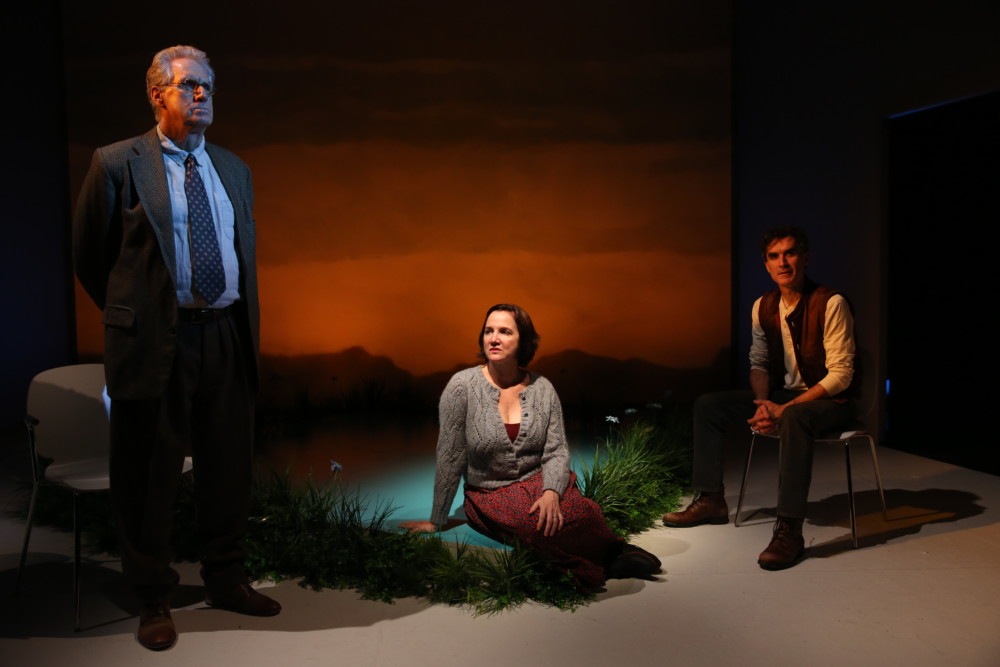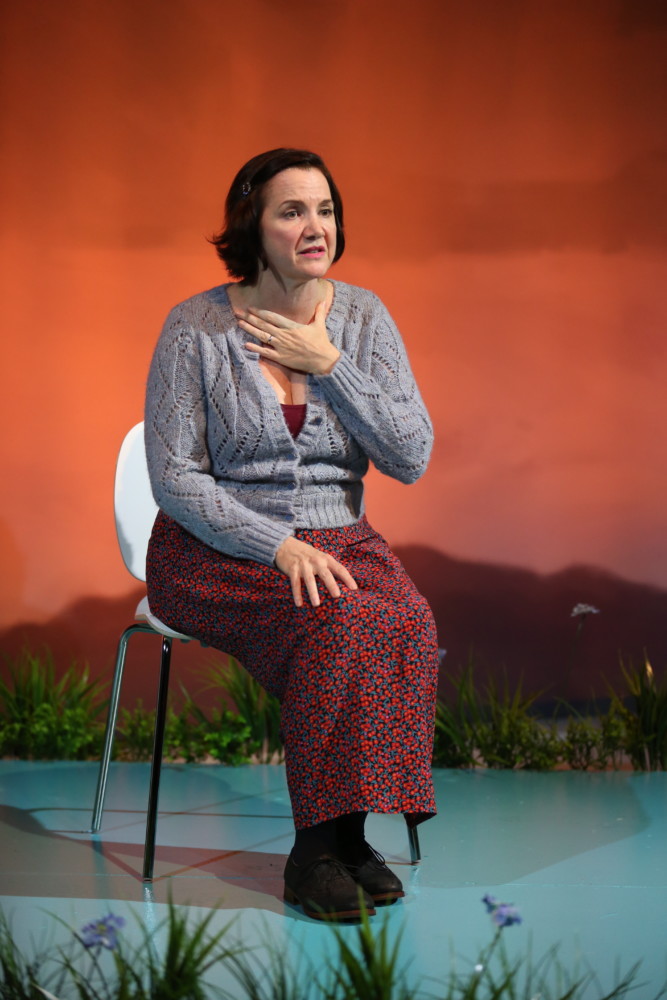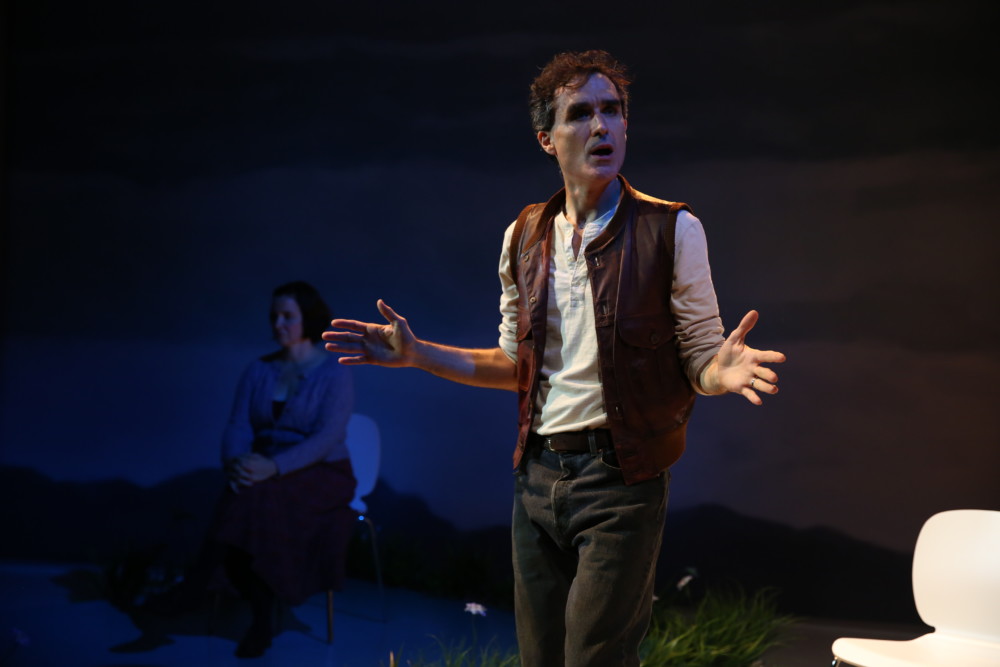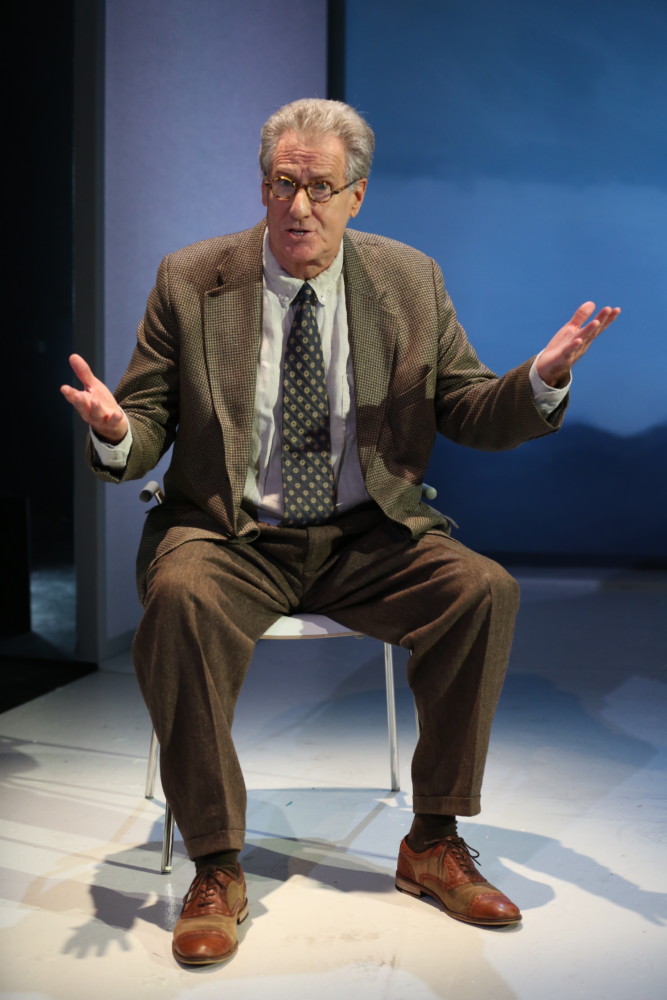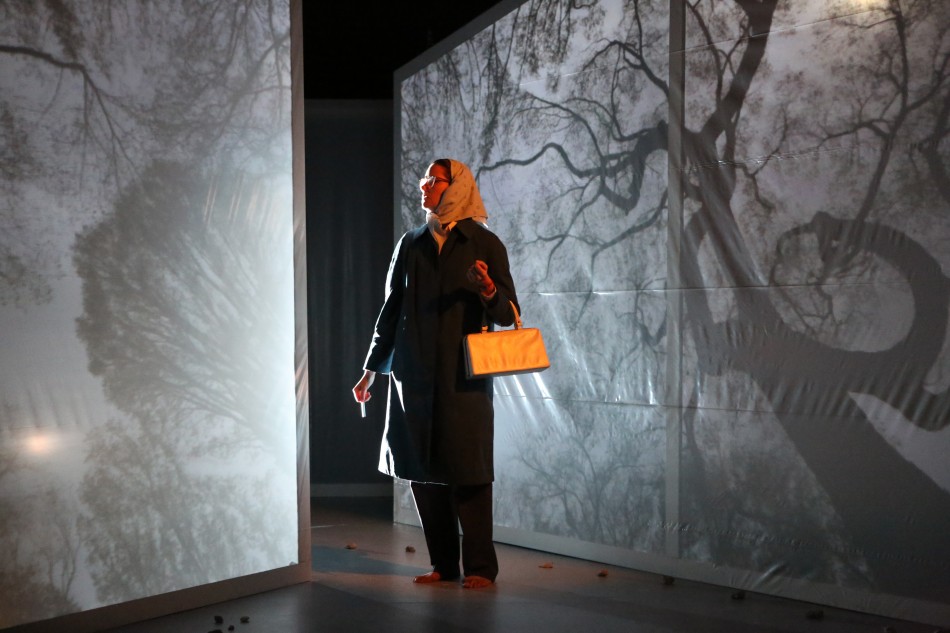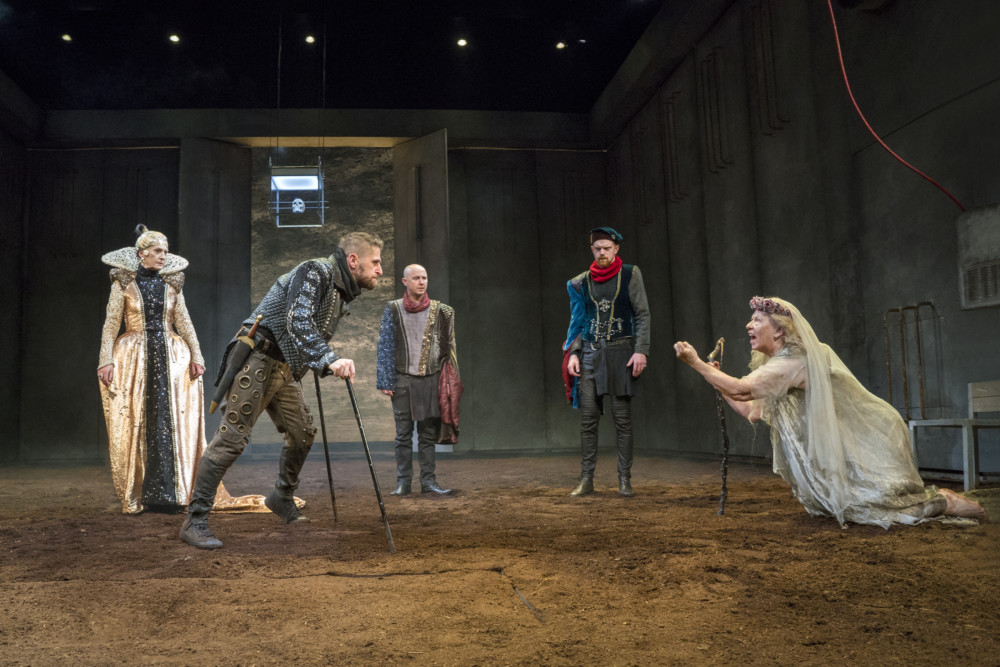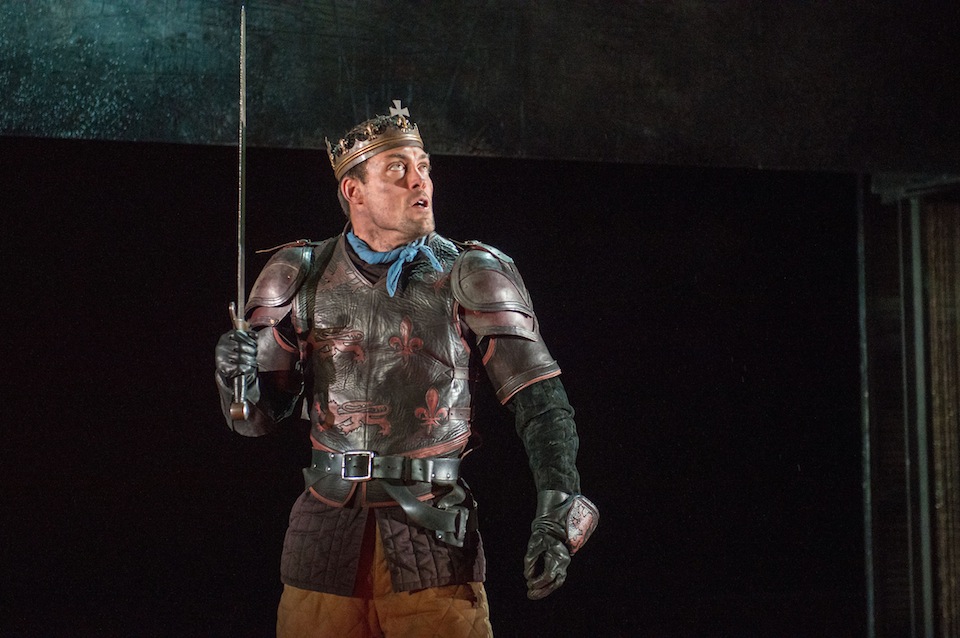By Marilyn Lester
Long considered one of the titans of English-language theater, Brian Friel’s Molly Sweeney is rich in the themes the playwright most often sought to explore––private anxieties, family ties, cultural identity, authority and personal myth as a way to cope with life events. It’s a rich field to cultivate, and in this beautifully mounted and acted production, the Keen Company has reaped a sizeable bounty of excellent return. Smartly directed by Jonathan Silverstein, and expertly acted by Paul O’Brien, Pamela Sabaugh and Tommy Schrider, this Molly Sweeney is a must-see for lovers of top-flight drama.
Ironically, when Molly Sweeney received its American premiere in 1996 at the Roundabout Theatre, Friel privately wondered if it would be a success. He feared that the monolog format would fail to hold the attention of the New York audience, yet Molly Sweeney won the Lucille Lortel Award for Outstanding Play of the season. Freil underestimated his ability to transfix an audience by transforming his actors, who tell Molly’s story in turns and who never interact, into shanachies, literally the “bearers of old lore.” So empowered by this ancient Irish tradition, Sabaugh as Molly, Schrider as her husband, Frank Sweeney, and O’Brien as the surgeon, Mr. Rice, spin the intense clarity of Friel’s multi-layered tale with masterful dexterity. At the end, three interwoven points of view come together into a powerful whole cloth of theatrical revelation.
Friel’s 40-year-old Molly has lost her sight in infancy. She’s learned to navigate her world and come to contented acceptance of it through heightened touch, sound, taste, and smell. Her well-meaning husband, Frank, and the ambitious doctor, Mr. Rice, conspire to restore Molly’s sight in a chancy operation. The dire outcome reveals what it means to truly see and not see, and how the road to Hell is often paved with good intentions. The setting of Molly Sweeney is the fictional Donegal town of Ballybeg (literally “small town” in Irish, and based on Friel’s own experience of the market town of Glenties). This particular location with its social and cultural implications is crucial to defining the characters of Molly, Frank and Rice, and informs how the actors can shape their performances.
Pamela Sabaugh as Molly Sweeney, the locus of the story, is an actor who in actuality possesses low vision. It would be easy to say she’s experientially ideal for the part, but that wouldn’t be the half of her extraordinary performance. Sabaugh has not only thoroughly mastered the Donegal accent, but has perfectly captured the essence of Irish womanhood of the era regardless of sight or lack of it. She is completely able to inhabit Molly with a truth and believability that’s nothing short of stunning. Her acting both when she’s on and “off” is constant and consistent. Most remarkable of all is Sabaugh’s ability to communicate the truth of her character with such serene ease and precision. Molly mostly lives in a world of her own construct, but through Sabaugh’s adroit performance we’re invited into it with unobtrusive intimacy.
Tommy Schrider too has captured the essence of the kind of Irish character known as a “chancer.” He’s a likeable sort, though, full of schemes and dreams that never work out. His relentless pursuit of knowledge drives his next venture and it’s this questing that provides the glimmer of hope that Molly’s sight could be restored. Shrider’s splendidly nuanced acting captures the odd angles of Frank, from naiveté to surprising wisdom and from the comic relief of his humor to his serious earnestness and love for Molly to his growing dislike of Rice, a disdain rooted in the embedded class distinctions of Friel-era Ireland.
Rice, a disgraced medical man––once a promising Young Turk and now an outlier to the lofty prominence he once enjoyed––has become all too fond of the bottle. O’Brien plays Rice’s struggles and shortcomings well, but misses the edge on what enables Rice to maintain his semblance and shred of dignity: this is the counterpart of the class friction that Frank deeply feels. Like many educated and upper class Irish of the time, especially among professionals, the level of condescension for the lower classes is palpable. O’Brien’s Rice isn’t nearly pompous enough to be true to form. His interpretation of the character is satisfactory, but could have been made more effective by ratcheting up the insufferabilty quotient in Rice’s makeup.
Various productions of Molly Sweeney have sought to lend “interest” to the piece in staging ploys and scenic elements. The constant has always been three simple chairs, with Molly in center stage, Frank on her left and Rice on her right. In this mounting, Steven Kemp’s scenic design calls for a backdrop of sky with mountain peaks below and a raised green platform in Molly’s area, ringed with greenery. Neither distraction is necessary. Anshuman Bhatia’s sensitive lighting design is all that’s needed to carry Friel’s text and compelling acting home. Keen Company’s Artistic Director Jonathan Silverstein’s excellent direction of Molly Sweeney is also varied and creative enough to keep audience interest absorbed and engaged. Sound design by Fan Zhang and costume design by Jennifer Paar added texture to the piece.
Photos: Carol Rosegg
Performances of Molly Sweeney continue through November 16th only: Tuesday through Thursday evenings at 7 pm; Fridays at 8 pm; Saturdays at 2 pm & 8 pm; and Sunday matinees at 3 pm. To purchase tickets to Molly Sweeney visit the Theatre Row Box Office (410 West 42nd Street, between 9th and 10th Avenues), order online at Telecharge.com or order by phone at 212-239-6200.


